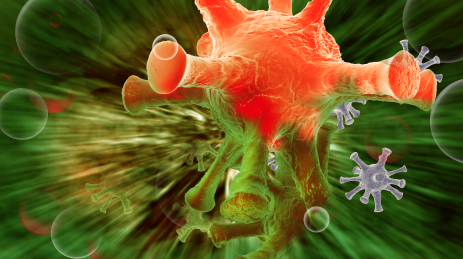 Microorganisms; they are the most abundant form of life. They are all around us, silent, unseen and undetected. The number of ‘species’ of archaea and bacteria climbs every year and is predicted to rise well past one million (1). Despite their abundance, we know very little about all but a small fraction of these diverse cellular life forms because we are unable to cultivate most in a laboratory setting. In fact, 88% of all our microbial isolates belong to just four bacterial phyla (Proteobacteria, Firmicutes, Actinobacteria and Bacterioidetes; 2). The remaining branches of the microbial phylogenetic tree range from underrepresented to virtually unknown and are collectively referred to as “microbial dark matter”.
Microorganisms; they are the most abundant form of life. They are all around us, silent, unseen and undetected. The number of ‘species’ of archaea and bacteria climbs every year and is predicted to rise well past one million (1). Despite their abundance, we know very little about all but a small fraction of these diverse cellular life forms because we are unable to cultivate most in a laboratory setting. In fact, 88% of all our microbial isolates belong to just four bacterial phyla (Proteobacteria, Firmicutes, Actinobacteria and Bacterioidetes; 2). The remaining branches of the microbial phylogenetic tree range from underrepresented to virtually unknown and are collectively referred to as “microbial dark matter”.
If you want to target those shadowy, ill-defined branches where exotic and underrepresented organisms belong, you go to environments that might harbor them. Towards this end, Christian Rinke and a large coalition of co-authors collected samples from a wide and varied choice of habitats including the South Atlantic tropical gyre, the Homestake Mine in South Dakota, the Great Boiling Spring in Nevada, the sediment at the bottom of the Etoliko Lagoon in Greece and even a bioreactor.
The specimens they collected couldn’t be cultivated in a lab, so the scientist used single-cell sequencing technology to sequence the full genomes of 201 microbes from the samples they collected. Using this data, they classified and named 18 new phyla of bacteria and archaea. Their results, published in Nature online on July 14th, suggest a substantial reconfiguration of the microbial tree of life (2).
Because they were able to use single cells to sequence the full genome of these samples, they were able to correct phylogenetic tree placements that had been made using less complete information. Among these, the salt loving Nanohaloarchaeota (formerly placed with Euryarchaeota) was put alongside Parvarchaeota, Aenigmarchaeota, Nanoarchaeota, and Diapherotrites in a new superphylum that the authors named DPANN. Their results also softened some of the boundaries conventionally held about the different kingdoms of life. They found sigma factors, which initiate RNA transcription, in three different archaea samples that they sequenced. Up until now, sigma factors where only know to exist in bacteria. And conversely, in one bacterial sample they found evidence of enzymes for purine synthesis that had previously been thought to exist only in archaea.
As exciting as these results are, this study really offered so much more than just phylogenetic clarity. It offered a brief glimpse into the complexity of the microbial world, a world we still know very little about. Looking for specific genes (determined using known bacterial isolates), the authors found some surprising capabilities among the microbes they sampled. For example, the large number of genes for degradation of amino acids and sugars point to a heterotrophic metabolism (the biologic oxidation of organic compounds to yield ATP and simpler organic (or inorganic) compounds, which are needed by the bacterial cell for biosynthetic or assimilatory reactions), and electron transport chain genes suggest that these organisms (perhaps not surprisingly) have a range of respiration strategies. Finally, they found one bacteria that had an alternative coding for the the opal stop codon, UGA. In almost every other organism, this codon tells a cell to stop translating RNA into protein, but in this new bacterial lineage, it tells the cell to make the amino acid glycine.
Microbial dark matter remains largely unseen and unknown, and all around us. The numbers of uncharacterized microbes greatly outnumber those that we have characterized. Based on what single-cell sequencing of just over 200 samples taught us about the microbial world, the potential that remains is staggering.
References
- Pedrós-Alió, C. (2006) Marine microbial diversity: can it be determined? Trends Microbiol. 14, 257–263.
- Rinke, C. et al. (2013) Insights into the phylogeny and coding potential of microbial dark matter. Nature July 14 [Epub ahead of print].
